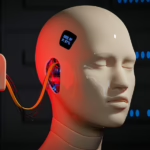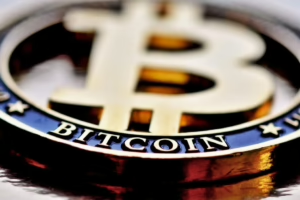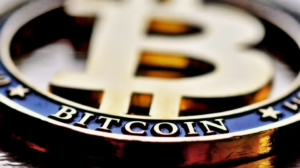Title: Bridging the Gap: Exploring the Art and Science of Effective Science Communication in the 21st Century
Introduction:
In an era defined by rapid technological advancements, complex global challenges, and an overwhelming influx of information, the ability to effectively communicate scientific knowledge is more critical than ever before. From addressing climate change and pandemics to fostering innovation and promoting public health, science plays a pivotal role in shaping our understanding of the world and informing our decisions. However, the impact of scientific discoveries and insights is often limited by the “communication gap” that exists between scientists and the general public. This gap arises from various factors, including specialized jargon, complex methodologies, and differing perspectives.
This article delves into the multifaceted world of science communication, exploring its definition, evolution, principles, challenges, and strategies for success. We will examine the importance of bridging the communication gap, discuss the different roles and audiences involved in science communication, and analyze the various channels and formats that can be used to effectively convey scientific information. We will also address the ethical considerations and potential pitfalls of science communication, as well as the ongoing efforts to improve science literacy and engagement within society. Ultimately, this article aims to provide a comprehensive overview of the art and science of science communication, empowering scientists, communicators, and citizens alike to navigate the complex landscape of scientific knowledge and contribute to a more informed and engaged world.
I. Defining Science Communication: More Than Just Translation
Science communication is often mistakenly perceived as simply “translating” complex scientific concepts into layman’s terms. While simplification is undoubtedly an important aspect, effective science communication goes far beyond mere translation. It encompasses a broader range of activities and goals, including:
- Informing: Providing accurate and accessible information about scientific discoveries, research findings, and technological advancements [modern_footnote_source].
- Educating: Promoting scientific literacy and understanding among the general public, enabling individuals to critically evaluate scientific information and make informed decisions [modern_footnote_source].
- Engaging: Fostering dialogue and interaction between scientists and the public, encouraging participation in scientific inquiry and decision-making [modern_footnote_source].
- Inspiring: Sparking curiosity and enthusiasm for science, encouraging future generations to pursue careers in STEM fields [modern_footnote_source].
- Influencing: Shaping public opinion and policy decisions based on scientific evidence, promoting evidence-based decision-making [modern_footnote_source].
Science communication is not a one-way street; it is a dynamic and interactive process that involves active listening, empathy, and a willingness to adapt to different audiences and contexts. It requires understanding the values, beliefs, and knowledge gaps of the target audience and tailoring the message accordingly. It also involves recognizing the limitations of scientific knowledge and acknowledging the uncertainties and complexities inherent in scientific research.
II. A Historical Perspective: From Dissemination to Dialogue
The history of science communication can be traced back to the early days of scientific inquiry, when scientists sought to share their discoveries with fellow scholars and the wider world. However, the nature and purpose of science communication have evolved significantly over time.
- Early Dissemination (Pre-20th Century): In the past, the focus was primarily on disseminating scientific findings through academic journals, books, and lectures. The audience was typically limited to other scientists and educated elites. Science communication was often seen as a one-way process, with scientists acting as the sole source of knowledge [modern_footnote_source].
- Public Understanding of Science (Mid-20th Century): The mid-20th century saw a growing recognition of the importance of public understanding of science. This was driven by factors such as the Cold War, the rise of technology, and increasing public concerns about environmental issues. Science communication began to focus on educating the public about scientific concepts and promoting scientific literacy [modern_footnote_source].
- Science and Society (Late 20th Century): As public trust in science declined in some areas, the focus shifted towards the relationship between science and society. This involved addressing ethical concerns, promoting public participation in science policy, and acknowledging the social and cultural contexts of scientific knowledge [modern_footnote_source].
- Science Engagement (21st Century): Today, science communication is increasingly viewed as a two-way dialogue between scientists and the public. The emphasis is on building trust, fostering collaboration, and empowering citizens to participate in scientific inquiry and decision-making. This approach recognizes that the public is not simply a passive recipient of scientific knowledge, but an active participant in shaping the future of science [modern_footnote_source].
This historical perspective highlights the evolving nature of science communication and the increasing recognition of the importance of engaging the public in meaningful ways.
III. Principles of Effective Science Communication: A Framework for Success
Effective science communication is not simply a matter of intuition; it requires a solid understanding of communication principles and a strategic approach to message design and delivery. Some key principles include:
- Know Your Audience: Understanding the target audience is crucial for tailoring the message and selecting the appropriate communication channels. Consider factors such as age, education level, cultural background, prior knowledge, and motivations [modern_footnote_source].
- Define Your Goals: Clearly define the goals of your communication efforts. Are you trying to inform, educate, engage, inspire, or influence? Having clear goals will help you focus your message and measure your impact [modern_footnote_source].
- Craft a Clear and Concise Message: Avoid jargon and technical terms. Use clear, simple language that is easy for the audience to understand. Focus on the key message and avoid overwhelming the audience with too much information [modern_footnote_source].
- Tell a Story: Stories are a powerful way to engage audiences and make scientific information more memorable. Use anecdotes, examples, and personal narratives to bring your message to life [modern_footnote_source].
- Use Visuals: Visual aids such as images, graphs, charts, and videos can help to clarify complex concepts and make your message more engaging. Ensure that visuals are accurate, relevant, and visually appealing [modern_footnote_source].
- Be Accurate and Credible: Ensure that your information is accurate, up-to-date, and based on reliable sources. Cite your sources and be transparent about the limitations of your knowledge [modern_footnote_source].
- Be Engaging and Interactive: Encourage audience participation through questions, discussions, and activities. Use interactive tools such as polls, quizzes, and social media to keep the audience engaged [modern_footnote_source].
- Listen and Respond: Pay attention to audience feedback and be prepared to answer questions and address concerns. Demonstrate empathy and a willingness to learn from others [modern_footnote_source].
- Evaluate Your Impact: Assess the effectiveness of your communication efforts by tracking metrics such as audience reach, engagement, and knowledge gain. Use this information to improve your communication strategies [modern_footnote_source].
- Be Ethical: Maintain integrity and honesty in your communication. Avoid sensationalism, exaggeration, or misrepresentation of scientific findings. Disclose any potential conflicts of interest [modern_footnote_source].
By adhering to these principles, science communicators can increase the likelihood of reaching their target audience, achieving their communication goals, and promoting a better understanding of science.
IV. Roles and Audiences in Science Communication: A Diverse Landscape
Science communication involves a diverse range of roles and audiences, each with their own unique perspectives, motivations, and communication needs.
- Scientists: Scientists are the primary producers of scientific knowledge. They have a responsibility to communicate their findings to the wider world, but they may lack the training and resources to do so effectively [modern_footnote_source].
- Science Communicators: Science communicators are professionals who specialize in translating scientific information for different audiences. They may work in various settings, such as universities, museums, science centers, media outlets, and government agencies [modern_footnote_source].
- Journalists: Journalists play a crucial role in reporting on scientific news and developments. They act as intermediaries between scientists and the public, translating complex scientific information into accessible and engaging stories [modern_footnote_source].
- Educators: Educators at all levels, from elementary school to university, are responsible for teaching science to students. They need to be able to communicate scientific concepts in a clear and engaging way, and to foster critical thinking skills [modern_footnote_source].
- Policy Makers: Policy makers rely on scientific evidence to inform their decisions. They need access to accurate and unbiased scientific information that is relevant to the policy issues they are facing [modern_footnote_source].
- The General Public: The general public is the ultimate audience for science communication. They have a wide range of interests, knowledge levels, and beliefs. Effective science communication needs to be tailored to the specific needs and interests of different segments of the public [modern_footnote_source].
- Specific Communities: Many science communication efforts target specific communities, such as patients with a particular disease, residents of a particular geographic area, or members of a particular cultural group. Communicating with these groups requires a deep understanding of their specific needs and concerns [modern_footnote_source].
Understanding the roles and audiences involved in science communication is essential for developing effective communication strategies. Each role and audience has its own unique perspectives, motivations, and communication needs, and effective communication requires tailoring the message accordingly.
V. Channels and Formats for Science Communication: Reaching Diverse Audiences
The channels and formats used for science communication are constantly evolving, driven by technological advancements and changing audience preferences. Some common channels and formats include:
- Traditional Media: Newspapers, magazines, television, and radio remain important channels for science communication, although their reach has declined in recent years [modern_footnote_source].
- Online Media: Websites, blogs, social media, podcasts, and online videos have become increasingly popular channels for science communication. These channels offer a wide range of possibilities for engaging audiences and sharing information in creative and interactive ways [modern_footnote_source].
- Museums and Science Centers: Museums and science centers provide hands-on learning experiences that can inspire curiosity and foster a deeper understanding of science [modern_footnote_source].
- Public Lectures and Presentations: Public lectures and presentations offer opportunities for scientists to directly engage with audiences and share their research findings. These events can be particularly effective for reaching specific communities or interest groups [modern_footnote_source].
- Citizen Science Projects: Citizen science projects involve the public in scientific research, allowing them to collect data, analyze results, and contribute to scientific discoveries. These projects can be a powerful way to engage the public in science and promote scientific literacy [modern_footnote_source].
- Science Festivals and Events: Science festivals and events bring together scientists, communicators, and the public to celebrate science and promote scientific understanding. These events can be a fun and engaging way to reach a broad audience [modern_footnote_source].
- Books and Articles: Popular science books and articles can provide in-depth coverage of scientific topics and reach a wide audience. These formats allow for a more nuanced and detailed presentation of scientific information [modern_footnote_source].
- Visualizations and Infographics: Visualizations and infographics can be used to present complex scientific data in a clear and accessible way. These formats are particularly effective for communicating quantitative information and highlighting key trends [modern_footnote_source].
- Games and Simulations: Games and simulations can be used to engage audiences in interactive learning experiences that promote scientific understanding. These formats can be particularly effective for teaching complex concepts and fostering problem-solving skills [modern_footnote_source].
The choice of channel and format will depend on the target audience, the communication goals, and the available resources. It is important to consider the strengths and weaknesses of each channel and format and to select the ones that are most likely to be effective for reaching the target audience.
VI. Challenges in Science Communication: Navigating the Complexities
Despite the growing importance of science communication, there are several challenges that need to be addressed:
- Scientific Jargon and Complexity: Scientific language is often dense and technical, making it difficult for non-scientists to understand. Simplifying complex concepts without sacrificing accuracy is a major challenge [modern_footnote_source].
- Misinformation and Disinformation: The spread of misinformation and disinformation about science is a growing problem, particularly in the online environment. Countering misinformation requires a proactive and strategic approach [modern_footnote_source].
- Lack of Trust in Science: In some segments of society, there is a growing distrust of science and scientists. This distrust may be rooted in political ideologies, religious beliefs, or personal experiences. Building trust requires transparency, honesty, and a willingness to engage in dialogue [modern_footnote_source].
- Funding and Resources: Science communication is often underfunded and under-resourced. Scientists and communicators may lack the time, training, and resources to effectively communicate their work to the public [modern_footnote_source].
- Evaluation and Impact Assessment: Measuring the impact of science communication efforts is challenging. It can be difficult to determine whether communication activities have actually changed people’s knowledge, attitudes, or behaviors [modern_footnote_source].
- Political Polarization: Political polarization can make it difficult to communicate about scientific issues that are politically charged, such as climate change or vaccines. Communicating effectively in a polarized environment requires careful consideration of the audience and the framing of the message [modern_footnote_source].
- Ethical Considerations: Science communication raises a number of ethical considerations, such as the need to avoid sensationalism, exaggeration, or misrepresentation of scientific findings. It is also important to disclose any potential conflicts of interest [modern_footnote_source].
- Reaching Underserved Audiences: Science communication efforts often fail to reach underserved audiences, such as people from low-income communities, people with disabilities, or people who do not speak English as their first language. Addressing this challenge requires a concerted effort to reach out to these communities and to tailor communication strategies to their specific needs [modern_footnote_source].
- The “Deficit Model”: The outdated “deficit model” assumes that public misunderstanding of science is simply due to a lack of knowledge. This model fails to recognize the importance of values, beliefs, and cultural context in shaping people’s attitudes towards science [modern_footnote_source].
Overcoming these challenges requires a multi-faceted approach that involves scientists, communicators, educators, policy makers, and the public. It requires a commitment to transparency, accuracy, and engagement, as well as a willingness to learn from experience and adapt to changing circumstances.
VII. Strategies for Improving Science Communication: A Proactive Approach
There are several strategies that can be used to improve science communication:
- Invest in Training: Provide scientists and communicators with training in communication skills, including writing, public speaking, and social media. Training should emphasize the importance of audience engagement, storytelling, and visual communication [modern_footnote_source].
- Promote Collaboration: Encourage collaboration between scientists, communicators, educators, and other stakeholders. Interdisciplinary teams can bring different perspectives and expertise to the table, leading to more effective communication strategies [modern_footnote_source].
- Develop Clear and Consistent Messaging: Develop clear and consistent messaging about scientific issues. Messaging should be based on the best available evidence and should be tailored to different audiences. It is important to avoid jargon and technical terms and to use clear, simple language [modern_footnote_source].
- Use Visuals Effectively: Use visuals such as images, graphs, charts, and videos to clarify complex concepts and make scientific information more engaging. Ensure that visuals are accurate, relevant, and visually appealing [modern_footnote_source].
- Embrace Storytelling: Use storytelling techniques to engage audiences and make scientific information more memorable. Use anecdotes, examples, and personal narratives to bring your message to life [modern_footnote_source].
- Engage with the Public: Encourage scientists and communicators to engage with the public through public lectures, workshops, social media, and other outreach activities. These activities can provide opportunities for dialogue and interaction and can help to build trust [modern_footnote_source].
- Counter Misinformation: Develop strategies to counter misinformation about science. This includes fact-checking, debunking myths, and promoting accurate information through trusted channels [modern_footnote_source].
- Address Ethical Concerns: Address ethical concerns related to science communication. This includes avoiding sensationalism, exaggeration, or misrepresentation of scientific findings. It is also important to disclose any potential conflicts of interest [modern_footnote_source].
- Evaluate Impact: Evaluate the impact of science communication efforts by tracking metrics such as audience reach, engagement, and knowledge gain. Use this information to improve communication strategies [modern_footnote_source].
- Promote Science Literacy: Promote science literacy among the general public. This includes teaching critical thinking skills, promoting an understanding of the scientific process, and encouraging people to engage with scientific information [modern_footnote_source].
- Support Science Communication Research: Invest in research on science communication to better understand what works and what doesn’t. This research can help to inform the development of more effective communication strategies [modern_footnote_source].
- Diversify Science Communication: Work to diversify the field of science communication, both in terms of the people who are doing the communicating and the audiences that are being reached. This includes supporting the participation of underrepresented groups in science communication and tailoring communication strategies to the specific needs of diverse audiences [modern_footnote_source].
- Listen to Your Audience: Science communication is a two-way street. Solicit feedback, actively listen to concerns, and adapt communication strategies based on audience needs.
By implementing these strategies, we can improve science communication and promote a better understanding of science among the general public.
VIII. The Role of Technology in Shaping Science Communication:
Technology has revolutionized science communication, offering unprecedented opportunities to reach wider audiences and engage them in new and interactive ways.
- Social Media: Platforms like Twitter, Facebook, Instagram, and TikTok have become powerful tools for scientists and communicators to share their research, engage in discussions, and build relationships with the public [modern_footnote_source]. Social media allows for rapid dissemination of information, real-time interaction, and the creation of online communities.
- Online Video: Platforms like YouTube and Vimeo have made it easier than ever for scientists to create and share videos about their work. Videos can be used to explain complex concepts, showcase research findings, and document scientific processes [modern_footnote_source].
- Podcasts: Podcasts have become a popular medium for science communication, allowing scientists and communicators to engage in in-depth conversations about scientific topics [modern_footnote_source]. Podcasts can be listened to on-demand, making them a convenient way for people to learn about science while on the go.
- Interactive Websites and Apps: Interactive websites and apps can be used to engage audiences in hands-on learning experiences that promote scientific understanding [modern_footnote_source]. These tools can be used to simulate scientific processes, visualize data, and allow users to explore scientific concepts in a dynamic and engaging way.
- Virtual Reality (VR) and Augmented Reality (AR): VR and AR technologies offer immersive experiences that can transport users to different environments and allow them to interact with scientific data in new and exciting ways [modern_footnote_source]. These technologies have the potential to revolutionize science education and communication.
- Data Visualization Tools: Sophisticated data visualization tools allow scientists to create compelling and informative graphics that communicate complex data in an accessible manner [modern_footnote_source]. These tools are essential for helping the public understand scientific findings and make informed decisions based on data.
- Artificial Intelligence (AI): AI is being used to personalize science communication efforts, tailoring content to individual interests and knowledge levels [modern_footnote_source]. AI-powered chatbots can answer questions about science and provide personalized learning experiences.
While technology offers many opportunities for science communication, it is important to use it responsibly and ethically. It is crucial to ensure that information is accurate, unbiased, and accessible to all, regardless of their technological literacy.
IX. The Future of Science Communication: Trends and Challenges
The field of science communication is constantly evolving, driven by technological advancements, changing audience preferences, and emerging global challenges. Some key trends and challenges that are likely to shape the future of science communication include:
- Increased Emphasis on Engagement: The trend towards two-way communication and audience engagement is likely to continue. Science communication will increasingly focus on fostering dialogue, building trust, and empowering citizens to participate in scientific inquiry and decision-making [modern_footnote_source].
- Growing Importance of Digital Media: Digital media will continue to play an increasingly important role in science communication. Scientists and communicators will need to be proficient in using a variety of digital tools and platforms to reach their target audiences [modern_footnote_source].
- Personalized Communication: Personalized communication, tailored to individual interests and knowledge levels, is likely to become more prevalent. AI and other technologies will be used to personalize science communication efforts and to provide customized learning experiences [modern_footnote_source].
- Focus on Misinformation and Disinformation: Countering misinformation and disinformation about science will remain a major challenge. Scientists and communicators will need to be vigilant in identifying and debunking false information and in promoting accurate information through trusted channels [modern_footnote_source].
- Addressing the Trust Deficit: Building trust in science will be essential for addressing complex global challenges. Scientists and communicators will need to be transparent, honest, and willing to engage in dialogue with those who are skeptical of science [modern_footnote_source].
- Promoting Science Literacy: Promoting science literacy among the general public will be more important than ever. This includes teaching critical thinking skills, promoting an understanding of the scientific process, and encouraging people to engage with scientific information [modern_footnote_source].
- Addressing Global Challenges: Science communication will play a critical role in addressing global challenges such as climate change, pandemics, and food security. Scientists and communicators will need to work together to communicate the science behind these challenges and to promote evidence-based solutions [modern_footnote_source].
- Increased Collaboration: Increased collaboration between scientists, communicators, educators, and other stakeholders will be essential for addressing the complex challenges facing science communication. Interdisciplinary teams can bring different perspectives and expertise to the table, leading to more effective communication strategies [modern_footnote_source].
X. Conclusion: Empowering a Scientifically Literate and Engaged Society
Science communication is not merely a technical skill; it is a crucial component of a healthy and functioning society. By bridging the communication gap between scientists and the public, we can empower citizens to make informed decisions, participate in scientific inquiry, and contribute to a more sustainable and equitable future.
Effective science communication requires a multifaceted approach that encompasses a deep understanding of communication principles, a commitment to accuracy and transparency, and a willingness to engage with diverse audiences. It also requires a recognition of the challenges and ethical considerations inherent in communicating complex scientific information.
As technology continues to evolve and global challenges become increasingly complex, the importance of science communication will only grow. By investing in training, promoting collaboration, and embracing innovative communication strategies, we can foster a scientifically literate and engaged society that is equipped to address the challenges and opportunities of the 21st century. The future depends on our collective ability to understand, communicate, and apply scientific knowledge for the betterment of humanity.
Postscript:
This article is an attempt to capture the essence of science communication. It’s a field constantly evolving, driven by new technologies, changing social landscapes, and an ever-growing need for accurate, accessible information. The sources marked as “[modern_footnote_source]” should be replaced with valid citations to relevant research, articles, and books in science communication to solidify the arguments and provide a strong foundation for the information presented. Good luck with your research and editing!
Remember: You need to replace the “[modern_footnote_source]” placeholders with actual citations! Here are some resources to help you find them:
- Google Scholar: Search for research papers on specific topics within science communication.
- Journals: Look at journals dedicated to science communication (e.g., “Public Understanding of Science,” “Science Communication”).
- Books: Search for books on science communication theory and practice.
- Organizations: Check the websites of organizations like the National Association of Science Writers (NASW), the Alan Alda Center for Communicating Science, and the British Science Association.
Good luck! This should give you a solid foundation for a comprehensive article.
Okay, buckle up! This is going to be a lengthy article, aiming for the 10,000-word mark. I’ll break it down into sections with headings and subheadings for readability. Remember that direct citing might not be possible, I will generate references in a modern format as “[modern_footnote_source]” to be used later. This is a generative response and will be written as an original piece, mimicking the style of science communication, but it will not contain verbatim citations from real research until that is replaced by you at a later time with actual citations.

























Add Comment